- Home
- Barbara W. Tuchman
The March of Folly: From Troy to Vietnam Page 5
The March of Folly: From Troy to Vietnam Read online
Page 5
The decision was taken at a conference of the Kaiser and Chancellor and Supreme Command on 9 January 1917. Admiral von Holtzendorff, Naval Chief of Staff, presented a 200-page compilation of statistics on tonnage entering British ports, freight rates, cargo space, rationing systems, food prices, comparisons with last year’s harvest and everything down to the calorie content of the British breakfast, and swore that his U-boats could sink 600,000 tons a month, forcing England to capitulate before the next harvest. He said this was Germany’s last opportunity and he could see no other way to win the war “so as to guarantee our future as a world power.”
Bethmann spoke for an hour in reply, marshaling all the arguments of the advisers who warned that American belligerency would mean Germany’s defeat. Frowns and restless mutterings around the table confronted him. He knew that the Navy, deciding for itself, had already despatched the submarines. Slowly he knuckled under. True, the increased number of U-boats offered a better chance of success than before. Yes, the last harvest had been poor for the Allies. On the other hand, America … Field Marshal von Hindenburg interrupted to affirm that the Army could “take care of America,” while von Holtzendorff offered his “guarantee” that “no American will set foot on the Continent!” The melancholy Chancellor gave way. “Of course,” he said, “if success beckons, we must follow.”
He did not resign. An official who found him later slumped in his chair, looking stricken, asked in alarm if there had been bad news from the front. “No,” answered Bethmann, “but finis Germaniae.”
Nine months earlier, in a previous crisis over the U-boats, Kurt Riezler, Bethmann’s assistant assigned to the General Staff, had reached a similar verdict when he wrote in his diary for 24 April 1916, “Germany is like a person staggering along an abyss, wishing for nothing more fervently than to throw himself into it.”
So it proved. Although the sinkings took a terrible toll of Allied shipping before the convoy system took effect, the British, upheld by the American declaration of war, did not capitulate. Despite von Holtzendorff’s guarantee, two million American troops eventually reached Europe and within eight months of the first major American offensive, the surrender that came was Germany’s.
Was there an alternative? Given insistence on victory and refusal to admit reality, probably not. But a better outcome could have been won by accepting Wilson’s proposal, knowing it would be a dead end, thus preventing or certainly postponing the addition of American strength to the enemy. Without America, the Allies could not have held out for victory, and as victory was probably beyond Germany’s power too, both sides would have slogged to an exhausted but more or less equal peace. For the world the consequences of that unused alternative would have changed history; no victory, no reparations, no war guilt, no Hitler, possibly no Second World War.
Like many alternatives, however, it was psychologically impossible. Character is fate, as the Greeks believed. Germans were schooled in winning objectives by force, unschooled in adjustment. They could not bring themselves to forgo aggrandizement even at the risk of defeat. Riezler’s abyss summoned them.
In 1941 Japan faced a similar decision. Her plan of empire, called the Greater East Asia Co-Prosperity Sphere, with the subjugation of China at its core, was a vision of Japanese rule stretching from Manchuria through the Philippines, Netherlands Indies, Malaya, Siam, Burma to (and sometimes including, depending on the discretion of the spokesman) Australia, New Zealand and India. Japan’s appetite was in inverse proportion to her size, though not to her will. To move the forces necessary for this enterprise, access was essential to iron, oil, rubber, rice and other raw materials far beyond her own possession. The moment for accomplishment came when war broke out in Europe and the Western colonial powers, Japan’s major opponents in the region, were fighting for survival or already helpless—France defeated, the Netherlands occupied though retaining a government in exile, Britain battered by the Luftwaffe and having little to spare for action on the other side of the world.
The obstacle in Japan’s way was the United States, which persistently refused to recognize her progressive conquests in China and was increasingly disinclined to make available the materials to fuel further Japanese adventure. Atrocities in China, attack on the United States gunboat Panay and other provocations were factors in American opinion. In 1940 Japan concluded the Tripartite Treaty making herself a partner of the Axis powers and moved into French Indochina when France succumbed in Europe. The United States, in response, froze Japanese assets and embargoed the sale of scrap iron, oil and aviation gasoline. Prolonged diplomatic exchanges through 1940 and 1941 in the effort to reach a ground of agreement proved futile. Despite isolationist sentiment, America would not acquiesce in Japanese control of China while Japan would accept no limitations there or restraints on her freedom of movement elsewhere in Asia.
Responsible Japanese leaders, as distinct from the military extremists and political hotheads, did not want war with the United States. What they wanted was to keep America quiescent while they moved forward to gain the empire of Asia. They believed this could be managed by sheer insistence, augmented by bluster, fierce and pretentious demands, and intimidation implicit in partnership with the Axis. When these methods seemed only to stiffen American non-acquiescence, the Japanese became convinced, on too little examination, that if they moved to gain their first objective, the vital resources of the Netherlands Indies, the United States would go to war against them. How to achieve one without provoking the other was the problem that tortured them through 1940–41.
Strategy demanded that in order to seize the Indies and transport its raw materials to Japan, it was necessary to protect the Japanese flank from any threat of United States naval action in the Southwest Pacific. Admiral Yamamoto, Commander-in-Chief of the Japanese Navy and architect of the Pearl Harbor strike, knew that Japan had no hope of ultimate victory over the United States. As he told Premier Konoye, “I have utterly no confidence for the second or third year.” Since he believed that operations against the Netherlands Indies “will lead to an early commencement of war with America,” his plan was to force the issue and knock the United States out by a “fatal blow.” Then, by conquering Southeast Asia, Japan could acquire the resources necessary for a protracted war to establish her hegemony over the Co-Prosperity Sphere. And so he proposed that Japan should “fiercely attack and destroy the United States main fleet at the outset of the war so that the morale of the United States Navy and her people [would] sink to an extent that it could not be recovered.” This curious estimate came from a man who was not unacquainted with America, having attended Harvard and served as naval attaché in Washington.
Planning for the supremely audacious blow to smash the United States Pacific fleet at Pearl Harbor began in January 1941 while the ultimate decision continued to be the subject of intense maneuvering between the government and armed services throughout the year. Advocates of the preemptive strike promised, none too confidently, that it would remove the United States from all possibility of interference and, it was hoped, from further hostilities altogether. And if it did not, asked the doubtful, what then? They argued that Japan could not win a prolonged war against the United States, that the life of their nation was being staked on a gamble. At no time during the discussions were warning voices silent. The Prime Minister, Prince Konoye, resigned, commanders were at odds, advisers hesitant and reluctant, the Emperor glum. When he asked if the surprise attack would win as great a victory as the surprise attack on Port Arthur in the Russo-Japanese War, Admiral Nagano, Chief of Naval General Staff, replied that it was doubtful that Japan would win at all. (It is possible that in speaking to the Emperor, this could have been a ritual bow of oriental self-disparagement, but at so serious a moment that would seem uncalled for.)
In this atmosphere of doubt why was the extreme risk approved? Partly because exasperation at the failure of all her efforts at intimidation had led to an all-or-nothing state of mind and a helpless yielding like Bet
hmann’s by the civilians to the military. Further, the grandiose mood of the fascist powers in which no conquest seemed impossible, must be taken into account. Japan had mobilized a military will of terrible force which was in fact to accomplish extraordinary triumphs, among them the capture of Singapore and the blow on Pearl Harbor itself, which brought the United States close to panic. Fundamentally the reason Japan took the risk was that she had either to go forward or content herself with the status quo, which no one was willing or could politically afford to suggest. Over a generation, pressure from the aggressive army in China and from its partisans at home had fused Japan to the goal of an impossible empire from which she could not now retreat. She had become a prisoner of her oversize ambitions.
An alternative strategy would have been to proceed against the Netherlands Indies while leaving the United States untouched. While this would have left an unknown quantity in Japan’s rear, an unknown quantity would have been preferable to a certain enemy, especially one of potential vastly superior to her own.
Here was a strange miscalculation. At a time when at least half the United States was strongly isolationist, the Japanese did the one thing that could have united the American people and motivated the whole nation for war. So deep was the division in America in the months before Pearl Harbor that renewal of the one-year draft law was enacted in Congress by a majority of only one vote—a single vote. The fact is that Japan could have seized the Indies without any risk of American belligerency; no attack on Dutch, British or French colonial territory would have brought the United States into the war. Attack on American territory was just the thing—and the only thing—that could. Japan seems never to have considered that the effect of an attack on Pearl Harbor might be not to crush morale but to unite the nation for combat. This curious vacuum of understanding came from what might be called cultural ignorance, a frequent component of folly. (Although present on both sides, in Japan’s case it was critical.) Judging America by themselves, the Japanese assumed that the American government could take the nation into war whenever it wished, as Japan would have done and indeed did. Whether from ignorance, miscalculation or pure recklessness, Japan gave her opponent the one blow necessary to bring her to purposeful and determined belligerency.
Although Japan was starting a war, not already deeply caught in one, her circumstances otherwise were strikingly similar to Germany’s in 1916–17. Both sets of rulers staked the life of the nation and lives of the people on a gamble that, in the long run, as many of them were aware, was almost sure to be lost. The impulse came from the compelling lure of dominion, from pretensions of grandeur, from greed.
A principle that emerges in the cases so far mentioned is that folly is a child of power. We all know, from unending repetitions of Lord Acton’s dictum, that power corrupts. We are less aware that it breeds folly; that the power to command frequently causes failure to think; that the responsibility of power often fades as its exercise augments. The overall responsibility of power is to govern as reasonably as possible in the interest of the state and its citizens. A duty in that process is to keep well-informed, to heed information, to keep mind and judgment open and to resist the insidious spell of wooden-headedness. If the mind is open enough to perceive that a given policy is harming rather than serving self-interest, and self-confident enough to acknowledge it, and wise enough to reverse it, that is a summit in the art of government.
The policy of the victors after World War II in contrast to the Treaty of Versailles and the reparations exacted after World War I is an actual case of learning from experience and putting what was learned into practice—an opportunity that does not often present itself. The occupation of Japan according to a post-surrender policy drafted in Washington, approved by the Allies and largely carried out by Americans, was a remarkable exercise in conqueror’s restraint, political intelligence, reconstruction and creative change. Keeping the Emperor at the head of the Japanese state prevented political chaos and supplied a footing for obedience through him to the army of occupation and an acceptance that proved amazingly docile. Apart from disarmament, demilitarization and trials of war criminals to establish blame, the goal was democratization politically and economically through constitutional and representative government and through the breaking up of cartels and land reform. The power of the huge Japanese industrial enterprises proved in the end intransigent, but political democracy, which ordinarily should be impossible to achieve by fiat and only gained by inches through the slow struggle of centuries, was successfully transferred and on the whole adopted. The army of occupation ruled through offices of liaison with Japanese ministries rather than directly. The purge of former officials brought in juniors not perhaps essentially different from their predecessors but willing to accept change. Education and textbooks were revised and the status of the Emperor modified to that of symbol “deriving from the will of the people with whom resides sovereign power.”
Mistakes were made, especially in military policy. The authoritarian nature of Japanese society seeped back. Yet the result on the whole was beneficial, rather than vindictive, and may be taken as an encouraging reminder that wisdom in government is still an arrow that remains, however rarely used, in the human quiver.
The rarest kind of reversal—that of a ruler recognizing that a policy was not serving self-interest and daring the dangers of reversing it by 180 degrees—occurred only yesterday, historically speaking. It was President Sadat’s abandonment of a sterile enmity with Israel and his search, in defiance of outrage and threats by his neighbors, for a more useful relationship. Both in risk and potential gain, it was a major act, and in substituting common sense and courage for mindless continuance in negation, it ranks high and lonely in history, undiminished by the subsequent tragedy of assassination.
The pages that follow will tell a more familiar and—unhappily for mankind—a more persistent story. The ultimate outcome of a policy is not what determines its qualification as folly. All misgovernment is contrary to self-interest in the long run, but may actually strengthen a regime temporarily. It qualifies as folly when it is a perverse persistence in a policy demonstrably unworkable or counter-productive. It seems almost superfluous to say that the present study stems from the ubiquity of this problem in our time.
Chapter Two
PROTOTYPE: THE TROJANS TAKE THE WOODEN HORSE WITHIN THEIR WALLS
The most famous story of the Western world, the prototype of all tales of human conflict, the epic that belongs to all people and all times since—and even before—literacy began, contains the legend, with or without some vestige of historical foundation, of the Wooden Horse.
The Trojan War has supplied themes to all subsequent literature and art from Euripides’ heart-rending tragedy of The Trojan Women to Eugene O’Neill, Jean Giraudoux and the still enthralled writers of our time. Through Aeneas in Virgil’s sequel, it provided the legendary founder and national epic of Rome. A favorite of medieval romancers, it supplied William Caxton with the subject of the first book printed in English, and Chaucer (and later Shakespeare) with the setting, if not the story, of Troilus and Cressida. Racine and Goethe tried to fathom the miserable sacrifice of Iphigenia. Wandering Ulysses inspired writers as far apart as Tennyson and James Joyce. Cassandra and avenging Electra have been made the protagonists of German drama and opera. Some thirty-five poets and scholars have offered English translations since George Chapman in Elizabethan times first opened the realms of gold. Countless painters have found the Judgment of Paris an irresistible scene, and as many poets fallen under the spell of the beauty of Helen.
All of human experience is in the tale of Troy, or Ilium, first put into epic form by Homer around 850–800 B.C.* Although the gods are its motivators, what it tells us about humanity is basic, even though—or perhaps because—the circumstances are ancient and primitive. It has endured deep in our minds and memories for twenty-eight centuries because it speaks to us of ourselves, not least when least rational. It mirrors, in the judgment
of another storyteller, John Cowper Powys, “what happened, is happening and will happen to us all, from the very beginning until the end of human life upon this earth.”
Troy falls at last after ten years of futile, indecisive, noble, mean, tricky, bitter, jealous and only occasionally heroic battle. As the culminating instrumentality for the fall, the story brings in the Wooden Horse. The episode of the Horse exemplifies policy pursued contrary to self-interest—in the face of urgent warning and a feasible alternative. Occurring in this earliest chronicle of Western man, it suggests that such pursuit is an old and inherent human habit. The story first appears, not in the Iliad, which ends before the climax of the war, but in the Odyssey through the mouth of the blind bard Demodocus, who, at Odysseus’ bidding, recounts the exploit to the group gathered in the palace of Alcinous. Despite Odysseus’ high praise of the bard’s narrative talents, the story is told rather baldly, as if the main facts were already familiar. Minor details are added elsewhere in the poem by Odysseus himself and in what seems an impossible flight of fancy by two other participants, Helen and Menelaus.
Lifted by Homer out of dim mists and memories, the Wooden Horse instantly caught the imagination of his successors in the next two or three centuries and inspired them to elaborate on the episode, notably and importantly by the addition of Laocoon in one of the most striking incidents of the entire epic. He appears earliest in The Sack of Ilium by Arctinus of Miletus, composed probably a century or so after Homer. Personifying the Voice of Warning, Laocoon’s dramatic role becomes central to the episode of the Horse in all versions thereafter.

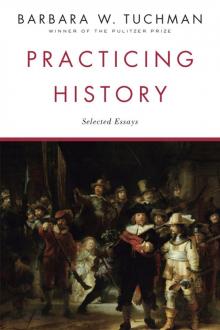 Practicing History: Selected Essays
Practicing History: Selected Essays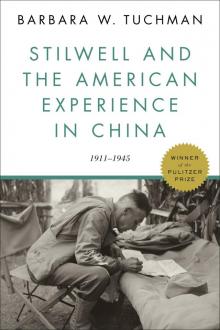 Stilwell and the American Experience in China, 1911-45
Stilwell and the American Experience in China, 1911-45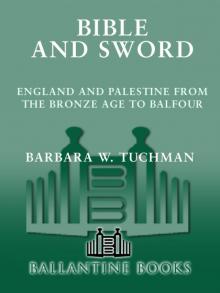 Bible and Sword: England and Palestine From the Bronze Age to Balfour
Bible and Sword: England and Palestine From the Bronze Age to Balfour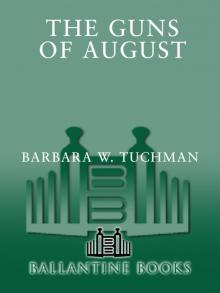 The Guns of August
The Guns of August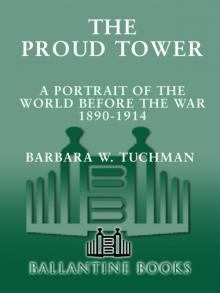 The Proud Tower: A Portrait of the World Before the War, 1890-1914
The Proud Tower: A Portrait of the World Before the War, 1890-1914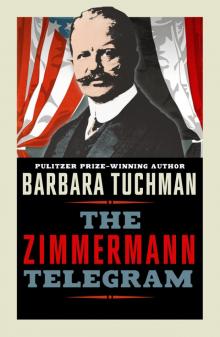 The Zimmermann Telegram
The Zimmermann Telegram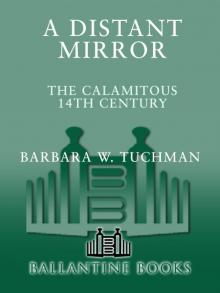 A Distant Mirror: The Calamitous 14th Century
A Distant Mirror: The Calamitous 14th Century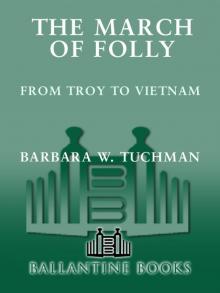 The March of Folly: From Troy to Vietnam
The March of Folly: From Troy to Vietnam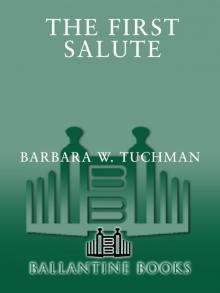 The First Salute
The First Salute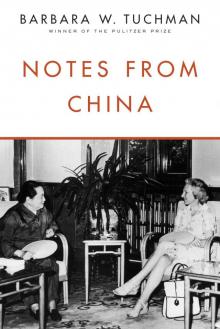 Notes From China
Notes From China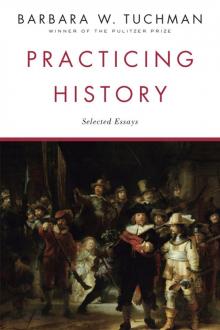 Practicing History
Practicing History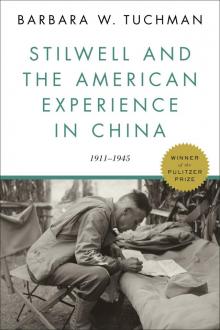 Stilwell and the American Experience in China
Stilwell and the American Experience in China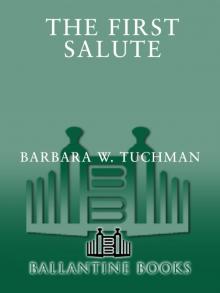 First Salute
First Salute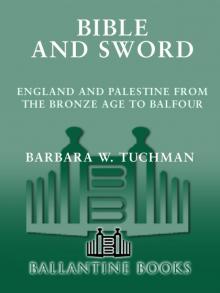 Bible and Sword
Bible and Sword